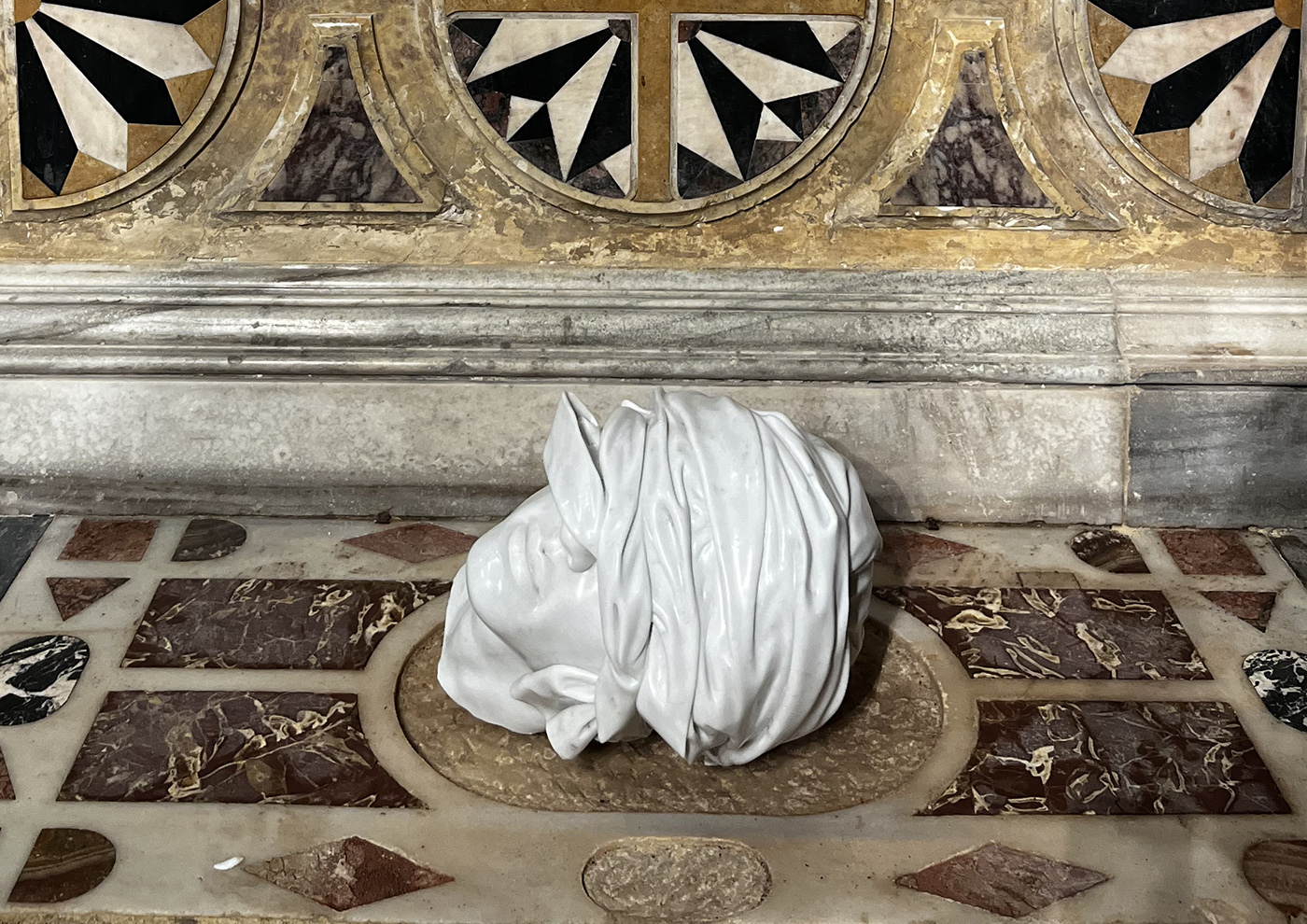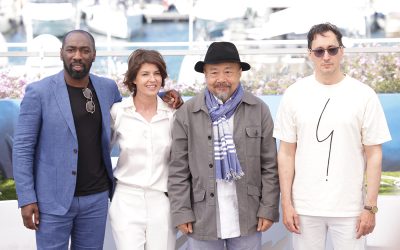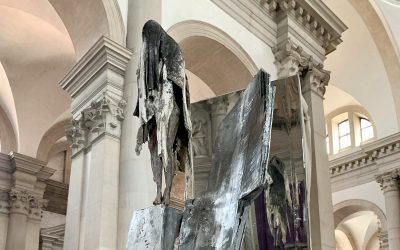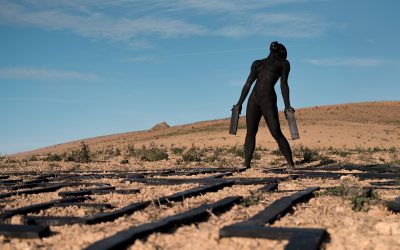Conceptual art often requires elaborate explanations that may seem disconnected from the act of creation itself. Yet, when all elements harmonise, these captivating pieces can spark our imaginations like wildfire. During the Biennale di Arte, Venice metamorphoses into a dynamic city where every corner or building can serve as an art space. La Chiesa di San Fantin plays host to a masterpiece curated by Serubiri Moses, New York-based academic and writer.
Within the sacred confines of the church, realistic sculptures cut by Carrara masters from pristine white marble seamlessly blend with the surroundings. Meanwhile, anonymous voices solemnly recite prisons, numbers, and dates, creating a stark contrast against the 207 meticulously carved male underwear arranged on the ancient floor. Viewers are beckoned to traverse this intriguing path guiding us towards a life-size new Davide – there are 3 such sculptures. Here, Reza Ramesh, Iranian-born British artist, transforms a brutal act into beauty. Yet, amidst this aesthetic allure, one may ponder: what purpose do aesthetics serve here?
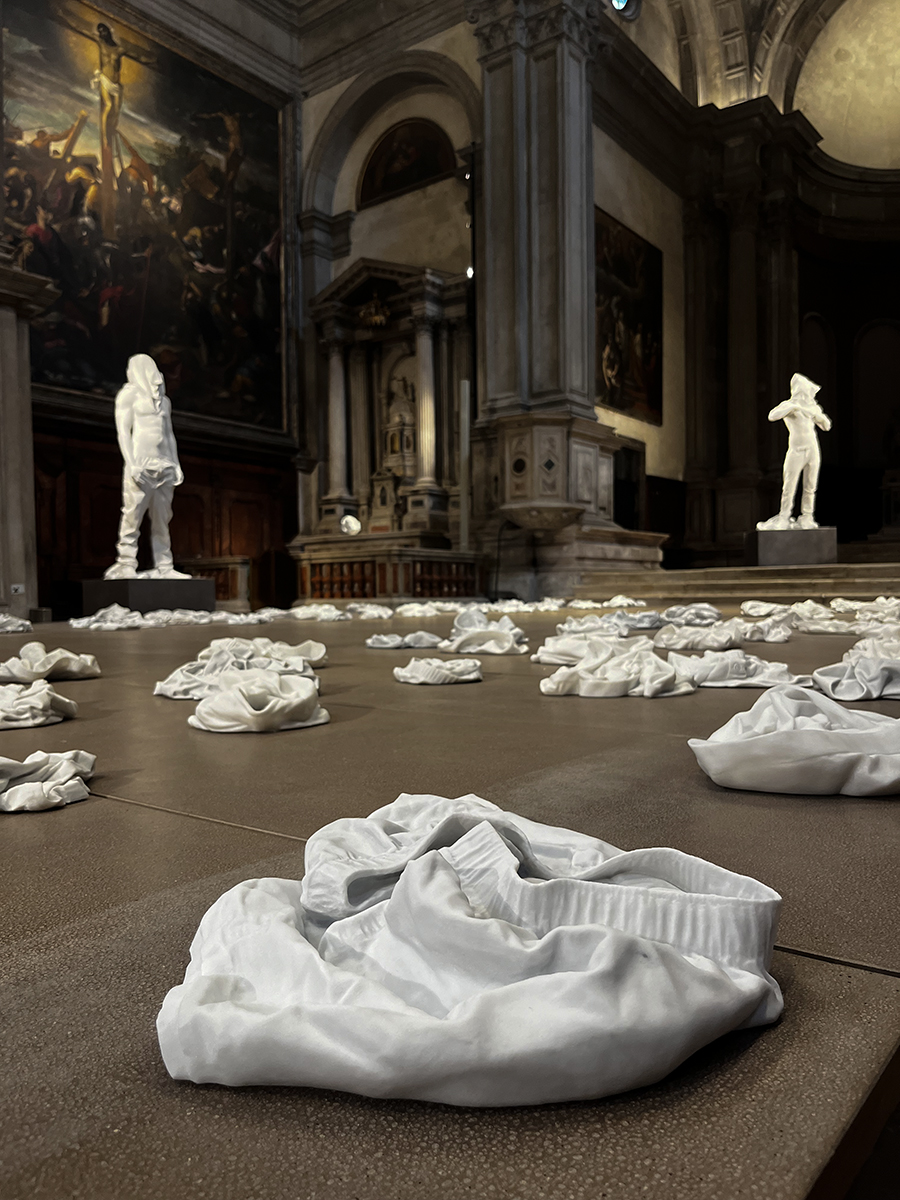
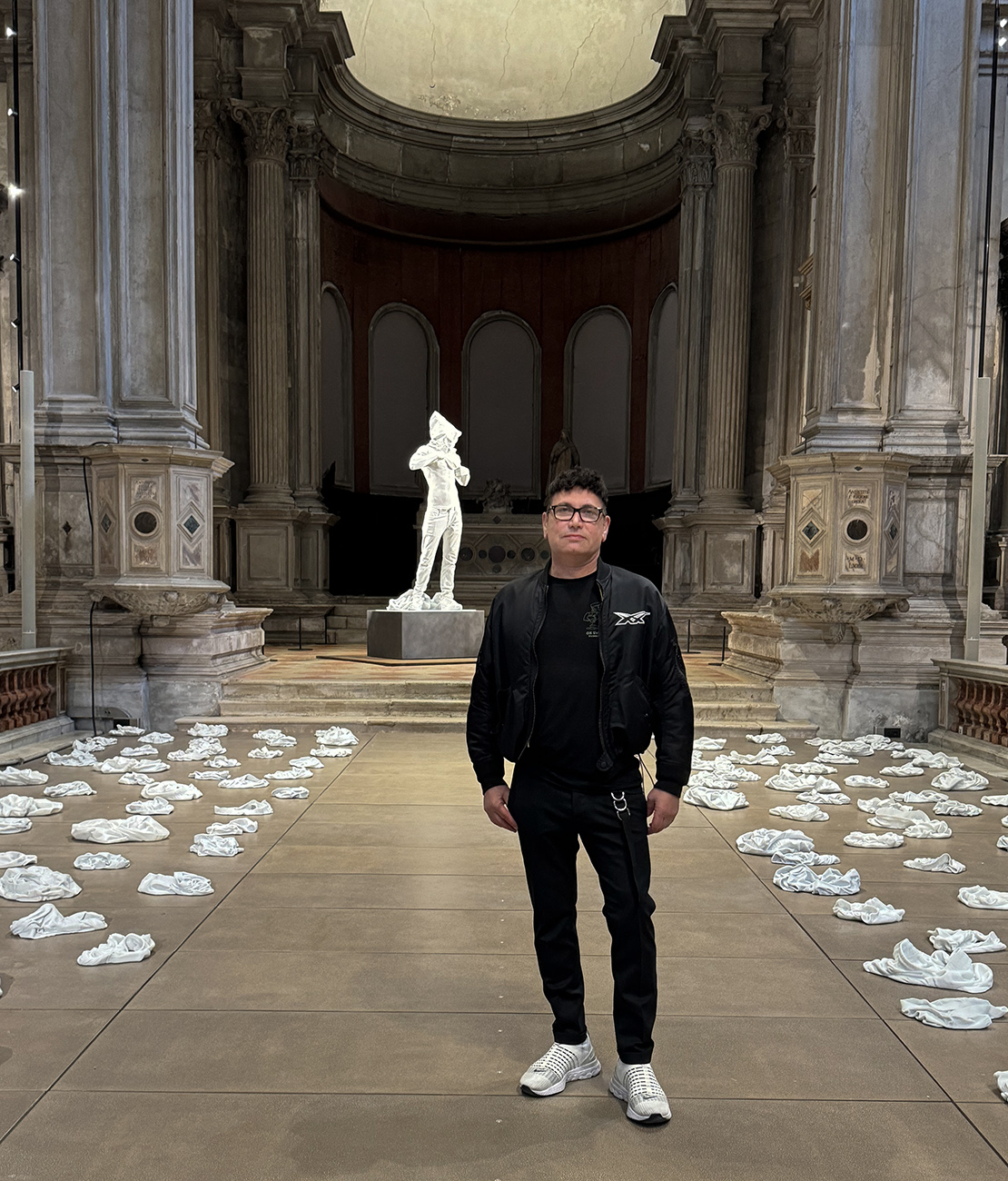
For his second presence at the Biennale di Arte di Venezia (previously included in the Iranian Pavilion of the 56th Biennale) Ramesh delves into questioning the use of power and brutality within our carceral systems. He examines the act of erasing one’s identity, reducing individuals to mere numbers confined within specific places and moments in time, forgotten by society and even family. However, there’s a deeper layer to Ramesh‘s work—the militant essence he infuses echoes the church’s own history. Number 207 engages in dialogue with its setting, resonating with the Order of Saint Fantin, which once housed and ministered to the condemned awaiting execution.
Ramesh, embodying both Iranian and British identities, channels his yearning for human dignity into a manifest art piece that prompts reflection on the evolution of our penitentiary system from a purely humane perspective.
In this captivating blend, a church, an Iranian artist residing in London, and a New York curator affiliated with an Argentinian gallery and the ICA Miami, we witness a fascinating concoction of cultural influences converging on the international stage of art.

